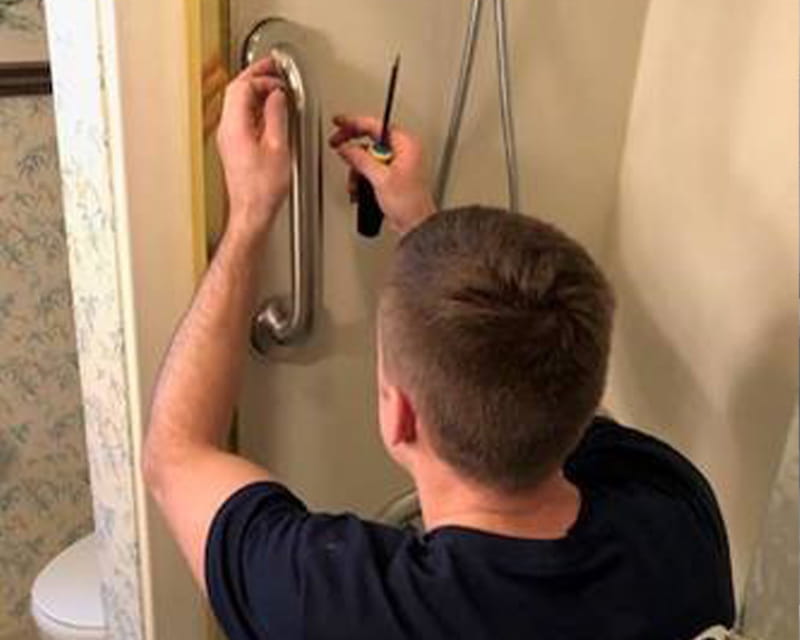
improving patient care
 Lower back pain is one of the most common reasons for seeking medical care and may contribute to chronic disability, opiate addiction, lost productivity and greatly reduced quality of life. Now, a research team at The Ohio State University Wexner Medical Center is using nanotechnology to tackle back pain at its roots — reprogramming human cells in the laboratory to restore function and slow the progression of disc degeneration.
Lower back pain is one of the most common reasons for seeking medical care and may contribute to chronic disability, opiate addiction, lost productivity and greatly reduced quality of life. Now, a research team at The Ohio State University Wexner Medical Center is using nanotechnology to tackle back pain at its roots — reprogramming human cells in the laboratory to restore function and slow the progression of disc degeneration.
Their work could eventually reduce lower back pain in human patients — and possibly revolutionize the way back pain and osteoarthritis are treated, by using biologics to treat the underlying disease processes that are generating the pain.
“A lot of research now is focusing on using knowledge about how tissues are formed to generate new therapies,” says Devina Purmessur (Walter), PhD, assistant professor of biomedical engineering and one of the study’s principal investigators. “We’re using transcription factor proteins that are expressed during development and growth of healthy intervertebral disc tissue. We want to trick the patient’s own cells and get them to revert to how they functioned in the healthy state and take on that healthy phenotype. We call it cellular reprogramming.”
This technology could translate to clinical care by allowing surgeons to directly inject engineered extracellular vesicles (EVs) with genetic cargo into the patient’s degenerate painful disc during routine surgery. Unlike gene therapy using viral vectors, this technology does not introduce genetic factors into the patient genome and thus is void of the potential mutagenesis and negative effects of viral gene therapy.
“You can think of these EVs as small nanocarriers,” explains fellow principal investigator Natalia Higuita-Castro, PhD, assistant professor of biomedical engineering. “What we’re doing is developing new techniques to be able to load these nanocarriers with specific developmental factors to trigger the conversion of the IVD cells from a diseased into a healthier phenotype.”
Drs. Purmessur and Higuita-Castro have published their in vitro work in the Journal of Orthopaedic Research and are currently working on an in vivo study, using mouse models of back pain. Orthopedic surgeon Safdar Khan, MD, serves as the team’s clinical collaborator and co-investigator. Additional co-investigators include Benjamin Walter, PhD, and Daniel Gallego-Perez, PhD.
The team has received a National Institutes of Health (NIH) R61 award to further explore this technology in preclinical models. If all goes well, they hope to begin a clinical trial for qualified patients in the foreseeable future.
“These were not pre-engineered or off-the-shelf cells,” Dr. Khan stresses. “These were live samples that I got from the operating room. So, this gives us some degree of confidence that it should hopefully work in a small animal, and then a larger animal, and then we could start recruiting for a clinical trial.”
The team agrees that their work — and receiving the R61 award — underscores the importance of multidisciplinary collaboration in research to ensure that new knowledge is relevant and applicable in a clinical setting. Their hope is that the technology could one day be adapted and used to treat osteoarthritis throughout the musculoskeletal system.
“Yearly, we spend hundreds of billions of dollars to try to alleviate risk for low back injury, whether it’s in the applied industrial ergonomic field, or trying to create policy around safety of health care workers or industrial engineering workers in the workplace,” Dr. Khan says. “And then the health care system absorbs huge costs for surgery or nonoperative care for patients who have arthritis in the lower back or spondylosis.
“The work that Drs. Purmessur and Higuita-Castro are doing in the lab could eventually decrease the burden of the disease, not only for individual patients but for all of us. It’s a nanotechnology approach, it’s a cellular reprogramming approach, and on the clinical side, it’s really a personalized approach, because we’re trying to harness the patient’s individual biology to fight the underlying disease. We’re the only center that's using a personalized, tailored nanotechnology approach toward cellular programming to attack the problem of low back pain and intervertebral disk degeneration. There’s a lot of work to be done, but this is one-of-a-kind.”